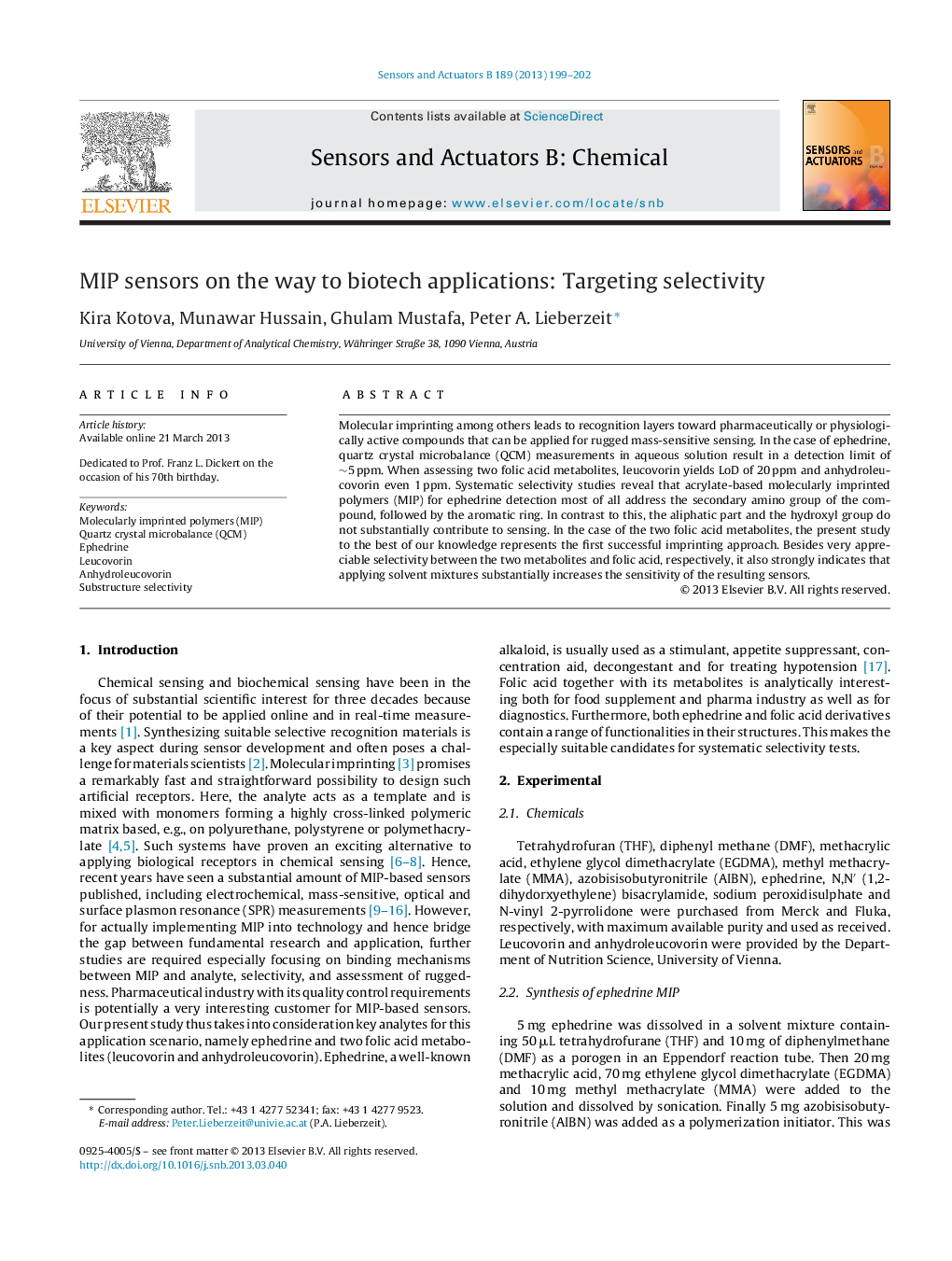| Article ID | Journal | Published Year | Pages | File Type |
|---|---|---|---|---|
| 740223 | Sensors and Actuators B: Chemical | 2013 | 4 Pages |
Molecular imprinting among others leads to recognition layers toward pharmaceutically or physiologically active compounds that can be applied for rugged mass-sensitive sensing. In the case of ephedrine, quartz crystal microbalance (QCM) measurements in aqueous solution result in a detection limit of ∼5 ppm. When assessing two folic acid metabolites, leucovorin yields LoD of 20 ppm and anhydroleucovorin even 1 ppm. Systematic selectivity studies reveal that acrylate-based molecularly imprinted polymers (MIP) for ephedrine detection most of all address the secondary amino group of the compound, followed by the aromatic ring. In contrast to this, the aliphatic part and the hydroxyl group do not substantially contribute to sensing. In the case of the two folic acid metabolites, the present study to the best of our knowledge represents the first successful imprinting approach. Besides very appreciable selectivity between the two metabolites and folic acid, respectively, it also strongly indicates that applying solvent mixtures substantially increases the sensitivity of the resulting sensors.
